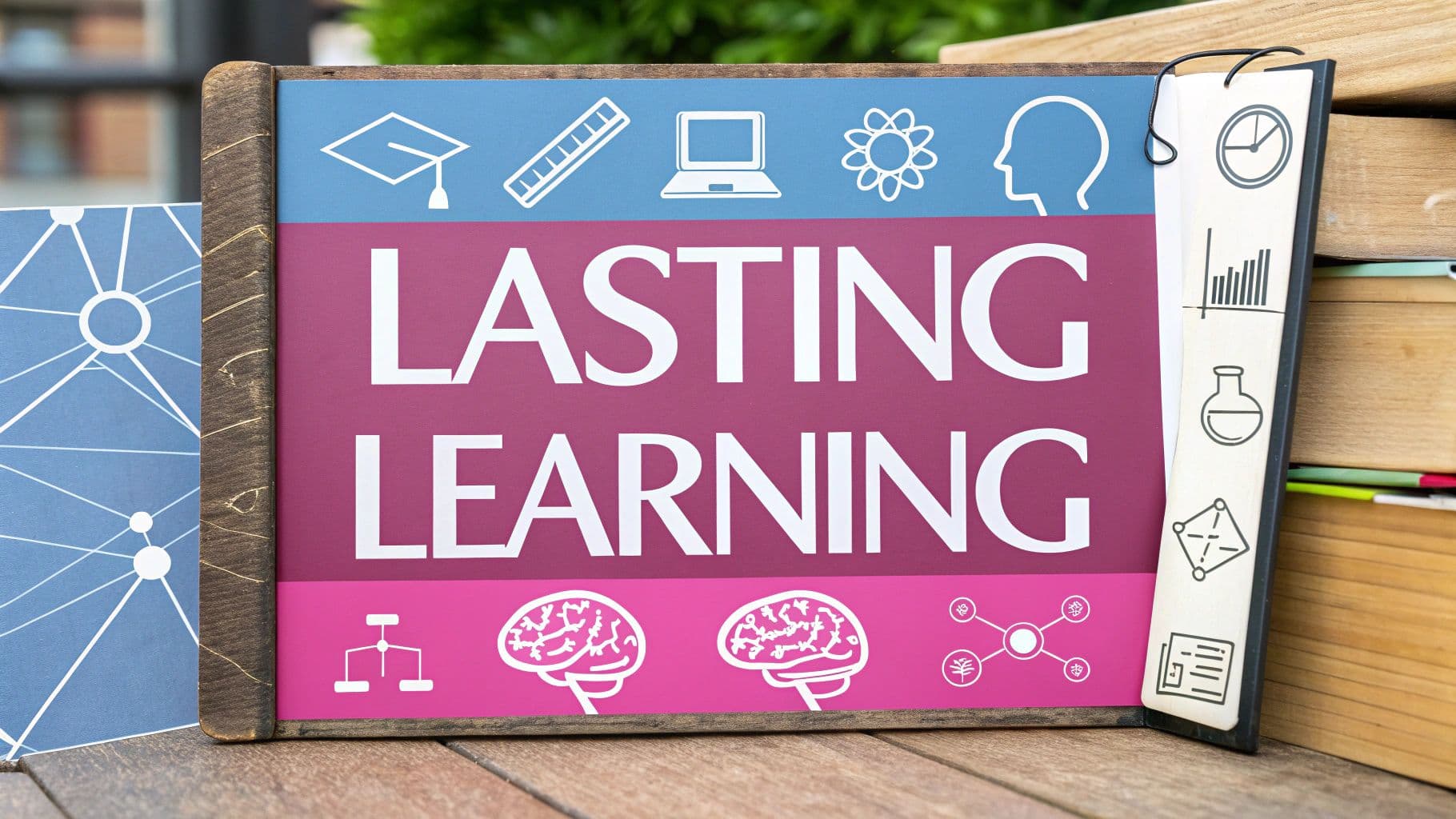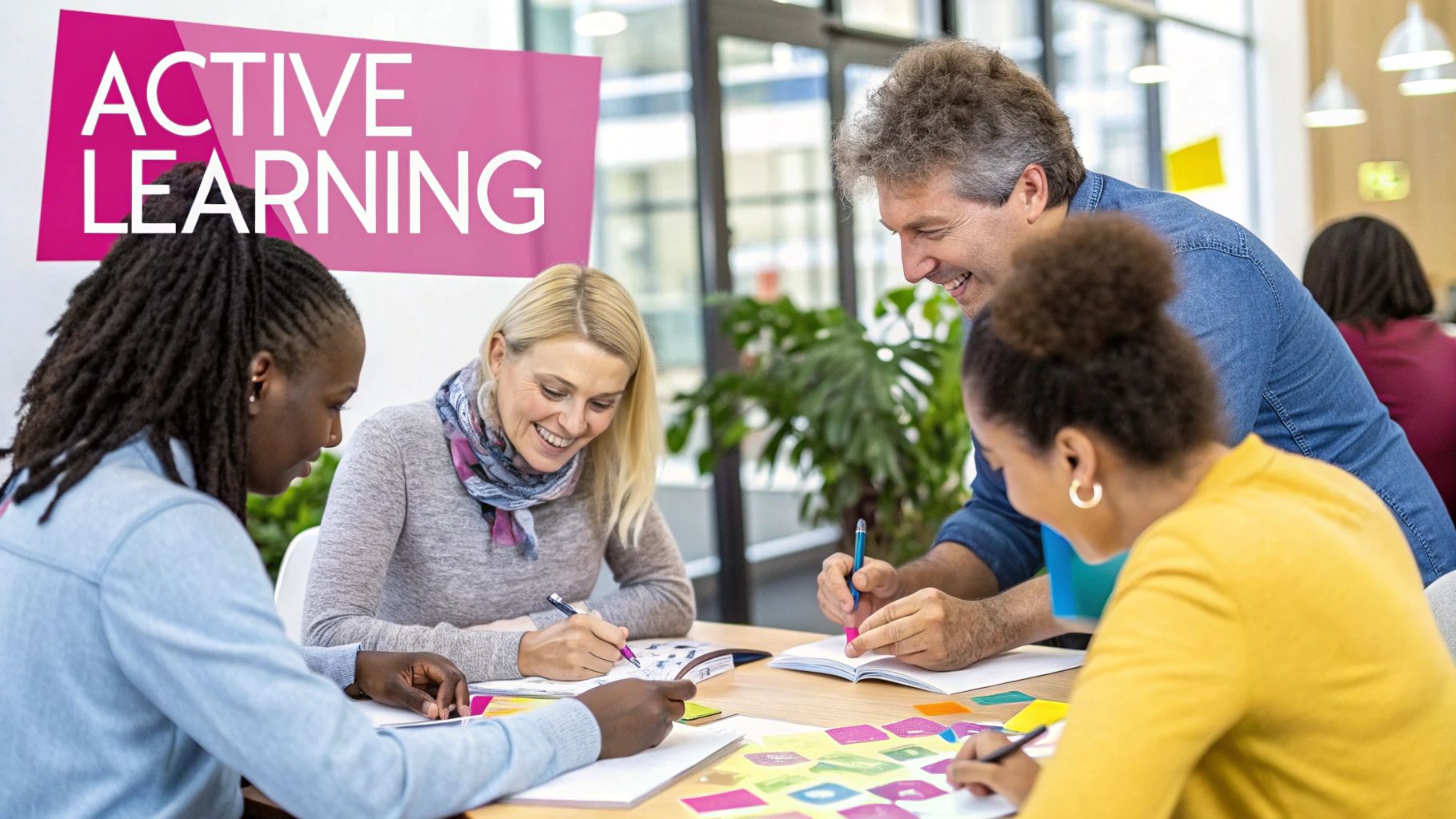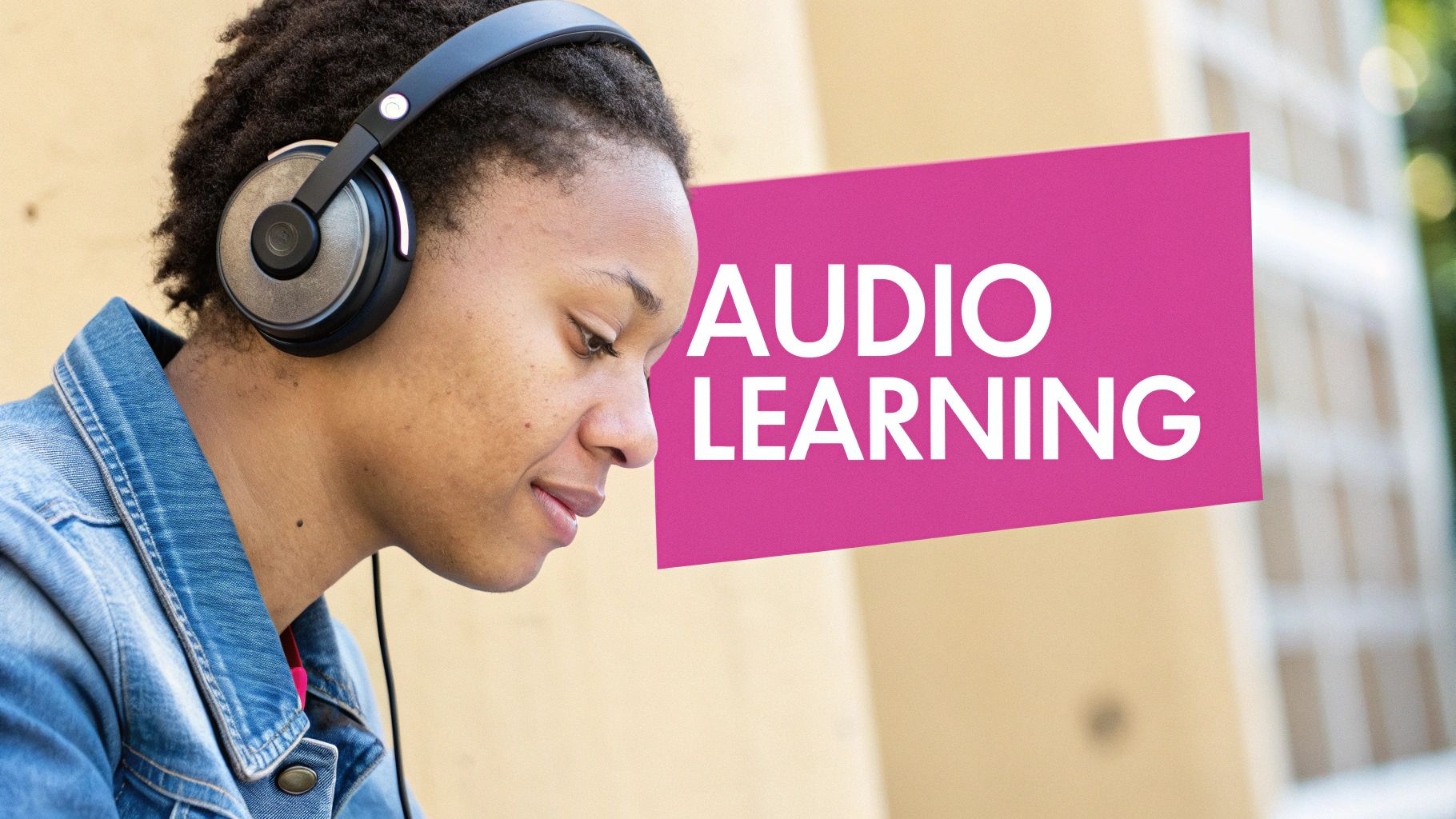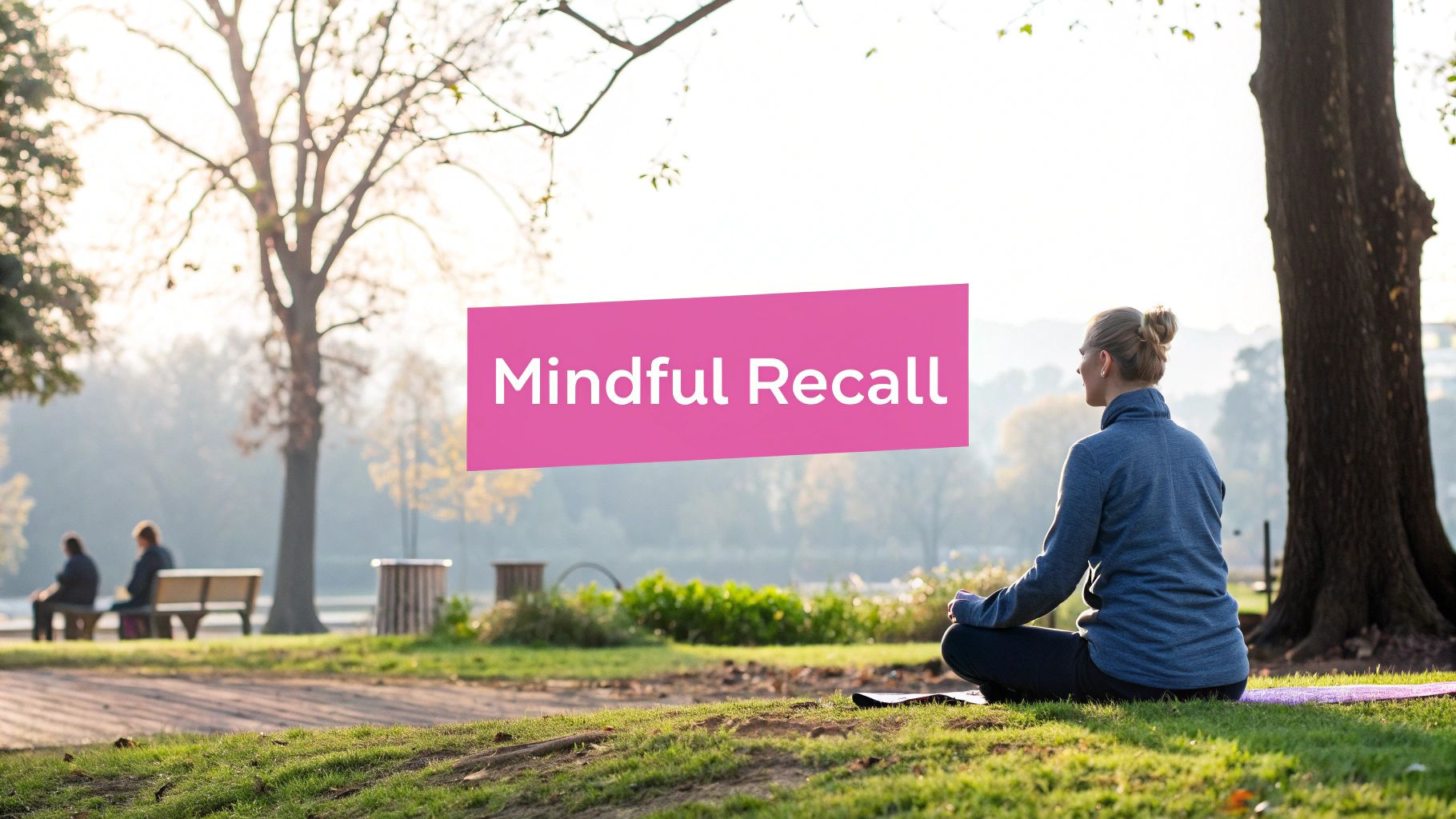
How to Retain Information Better: A Science-Based Guide for Lasting Learning
Understanding How Your Brain Actually Learns

The science of learning goes far beyond simple memorization techniques. To improve how we retain information, we need to understand the fundamental ways our brains process, store, and recall what we learn.
The Myth of Passive Learning
Common study methods like highlighting textbooks or just reading notes are not as effective as many believe. Research shows these passive approaches fail to engage our brains in the deep processing needed for long-term memory. In fact, after only three days, students typically remember just 10% of what they heard in a lecture. This rapid drop in retention happens because passive learning doesn't create lasting neural connections.
Active Engagement: The Key to Retention
The best way to counter this natural forgetting curve is through active learning methods. Just as you can't learn to ride a bike by reading about it, you need hands-on practice to truly master new information. When you actively work with material – whether by explaining it to others, solving problems, or applying concepts to real situations – retention rates jump to around 90%. This dramatic improvement occurs because active engagement forces your brain to process information more deeply.
Making Connections: Building a Web of Knowledge
Our brains naturally organize information by connecting new concepts to existing knowledge. Think of your memory as an intricate spider web, with each new piece of information forming additional strands that link to what you already know. By consciously creating these connections through examples, analogies, and personal experiences, you strengthen the neural pathways that help you remember. The more connections you build, the easier it becomes to recall and use what you've learned.
The Role of Context and Meaning
Your brain prioritizes information that feels relevant and meaningful. That's why concepts learned through real-world examples or personal experiences tend to stick with you longer than abstract facts memorized in isolation. For instance, physics principles become much clearer when you see them demonstrated through hands-on experiments rather than just reading formulas. Finding ways to connect new information to your own life experiences and interests helps your brain recognize it as important and worth remembering. By understanding and working with these natural learning processes, you can significantly improve how well you retain and use new knowledge.
Transforming Passive Learning Into Active Mastery

Common learning methods like highlighting and re-reading provide minimal value for retaining information. These passive approaches create an illusion of learning without actually helping us process and remember content effectively. Studies show that students using only passive techniques typically remember just 10% of material after three days. Let's explore how to shift from simply absorbing information to actively mastering it.
Active Recall: Testing Your Knowledge
One of the most proven ways to improve retention is active recall – deliberately trying to remember information without looking it up. Just like exercising builds muscle, practicing recall strengthens the neural pathways that store memories. This mental workout makes accessing the information much easier later on.
- Flashcards: Create cards with questions on one side and answers on the other to test yourself regularly
- The Feynman Technique: Teach concepts to others to reveal gaps in understanding and reinforce what you know
- Practice Questions: Work through sample problems to apply concepts and identify areas needing review
Spaced Repetition: Optimizing Your Review Schedule
Spaced repetition involves reviewing content at steadily increasing intervals to fight against natural forgetting. By returning to material at strategic times, you maintain and strengthen those memory connections for better long-term retention.
- Increasing Intervals: Start with short gaps between reviews (one day), then gradually space them further apart (three days, one week, etc.)
- Digital Tools: Use apps designed for spaced repetition to manage review timing efficiently
- Physical Flashcards: Sort cards into boxes based on confidence level, reviewing each set at different frequencies
Elaboration: Making Connections and Building a Web of Knowledge
Elaboration means linking new information to knowledge you already have. This creates richer mental networks that make recalling information easier. The more meaningful connections you build, the better you'll remember content over time.
- Analogies and Metaphors: Compare new ideas to familiar concepts. For example, relating electrical current to water flowing through pipes helps grasp circuit behavior.
- Real-World Examples: Find practical applications of abstract ideas to make them more concrete and memorable
- Concept Maps: Draw diagrams showing relationships between ideas to understand the bigger picture
When you engage actively with material, review strategically, and build meaningful connections, you can move beyond passive absorption to true mastery. This shift puts you in control of your learning and helps you remember information for the long term.
The Surprising Power of Analog Learning
Print and paper might seem outdated in today's tech-driven world, but research shows that old-school learning methods, especially handwriting, help us remember information more effectively than digital alternatives. This isn't an argument against technology – rather, it's about finding the right balance between traditional and modern approaches for maximum learning impact.
Why Handwriting Trumps Typing
When you write by hand, your brain engages in ways that typing simply can't match. Studies have found that writing activates multiple neural networks linked to memory and learning processes. As you form each letter, your brain processes the information more deeply compared to tapping keys on a keyboard. To visualize this difference, imagine two paths through a forest – repeatedly walking the same route (handwriting) creates a clear, memorable trail, while briefly looking at a map (typing) leaves a much fainter impression.
Hybrid Note-Taking: The Best of Both Worlds
Smart learners often combine handwritten notes with digital organization to get the benefits of both approaches. This method helps you process information thoroughly during learning while keeping your notes organized and searchable. Here are some practical ways to implement this:
- The Cornell Note-Taking System: Split your paper into three areas: main notes, questions, and summary. Take handwritten notes during class or reading sessions. Later, transfer your key points and summaries to a digital format to reinforce the material.
- Sketchnoting: Mix handwritten text with drawings, diagrams, and simple illustrations. This approach works especially well for visual learners. Capture your sketchnotes digitally to build an organized reference library.
- Handwrite, Then Digitize: Write notes by hand first, then scan or photograph them for digital storage. This gives you the memory benefits of writing while maintaining easy access to your notes.
Tailoring Analog Techniques to Different Learning Styles and Content
You can make analog methods even more effective by matching them to specific types of material and your personal learning preferences. For example, if you learn best through physical movement, try building simple models or using hands-on materials. When studying vocabulary, create physical flashcards – the act of writing words and definitions helps cement them in memory. For complex textbook chapters, writing summaries by hand helps you identify and remember key concepts.
This balanced approach – combining handwritten learning with digital organization – creates a powerful system for remembering information. By engaging multiple senses and taking advantage of how our brains naturally process information, you can build a learning practice that actually works. This foundation sets you up to explore even more ways to create lasting knowledge connections.
Creating Meaningful Connections That Stick

Our brains don't store information like computers do with neatly organized files. Instead, they create complex networks of connected ideas. Understanding how to build these meaningful connections is essential for better information retention. When we actively create links between different pieces of knowledge, we help our brains turn isolated facts into lasting, useful understanding.
Linking New Information to Existing Knowledge
One of the best ways to remember new information is to connect it to things you already know well. Think of it like building a bridge between familiar territory and new ground. For example, when learning about photosynthesis, you might start with your basic knowledge that plants need sunlight to grow. From there, you can gradually understand the more detailed chemical processes involved. This approach means you're not just memorizing facts – you're adding new pieces to your existing knowledge foundation in a way that makes natural sense.
Developing Robust Mental Models
Mental models are like maps that help us understand how things work. They give us a framework to grasp complex ideas and predict how those concepts will play out in different situations. For example, once you understand the basic mental model of supply and demand, you can predict how prices might change based on different market conditions. These mental models become increasingly valuable over time because they serve as natural connection points for new related information. As you learn more, you can attach new concepts to these established frameworks.
Building Comprehensive Understanding
When we focus on making meaningful connections, we move beyond simple memorization into true understanding. Each new piece of information becomes part of an interconnected web of knowledge, making it easier to recall and use. Consider learning a new language – while memorizing vocabulary lists helps you recognize individual words, understanding grammar patterns lets you actually construct sentences and express yourself naturally. Think of your knowledge as a network where each concept connects to many others. The more connections you create between different pieces of information, the stronger and more useful your understanding becomes. This networked approach makes knowledge more durable and practical than trying to remember isolated facts.
Mastering the Timing of Learning
When it comes to learning effectively, timing plays a crucial role in how well we remember information. The way we schedule and space out our study sessions can make a huge difference in long-term retention. By combining smart timing strategies with active recall and meaningful connections, we can significantly improve our ability to learn and remember.
Spaced Repetition: The Key to Long-Term Retention
Think of learning like tending to a garden – just as plants need regular watering that gradually decreases over time, our brains need repeated exposure to information at specific intervals. This approach, called spaced repetition, helps fight against our natural tendency to forget. Studies back this up clearly – students who use spaced repetition typically remember about 80% of material after a month, while those who cram retain only 20%.
- Initial Review: Go over new material within 24 hours of first learning it to strengthen the memory
- Increasing Intervals: Space out reviews further apart over time – perhaps a few days, then a week, then a month
- Varying Intervals: Adjust the timing based on how well you remember – shorter gaps if you're struggling, longer if it's easy
Practical Applications of Spaced Repetition
You can implement spaced repetition in several ways depending on what works best for you:
- Analog Systems: Use physical flashcards organized in boxes, reviewing cards in the first box daily, second box weekly, and so on. Move cards to the next box when you know them well.
- Digital Tools: Apps like Anki or Quizlet can automatically schedule your reviews using proven algorithms.
- Hybrid Approach: Start with handwritten notes, then transfer key points to digital flashcards for systematic review.
Customizing Timing Strategies for Different Material
Different types of information benefit from different review patterns:
| Material Type | Spaced Repetition Strategy |
|---|---|
| Vocabulary | Short initial intervals, gradually increasing |
| Formulas/Equations | Frequent reviews initially, then longer intervals |
| Conceptual Knowledge | Focus on application and explaining the concept |
For example, when learning a new language, you'll want to review vocabulary words frequently at first. But when studying physics concepts like gravity, you'll benefit more from applying the ideas to various scenarios and explaining them in your own words.
By adapting your timing strategy to the specific type of material you're studying, you can make your learning more efficient and effective. The key is to be consistent with reviews while staying flexible enough to adjust your approach based on what works best for you.
Teaching Others: The Ultimate Learning Accelerator

When it comes to retaining information effectively, teaching others stands out as one of the most powerful yet underused methods. Beyond just explaining concepts to someone else, the act of teaching builds deeper understanding and creates lasting memories. Let's explore how you can use teaching to accelerate your learning process and make information stick.
Why Teaching Works: Active Recall and Elaboration in Action
Teaching helps you learn better because it makes you pull information from memory and explain it clearly to others. Rather than just reviewing notes passively, you need to organize the material in a way that makes sense and present it coherently. Each time you do this, you strengthen the connections in your brain related to that information. Plus, teaching requires you to break down complex ideas, give examples, and answer questions – all of which help you understand the material more deeply. The combination of retrieving information and explaining it thoroughly makes teaching an excellent way to cement your learning.
Finding Teaching Opportunities: From Formal to Informal
You don't need a classroom or official students to teach effectively. Teaching opportunities exist all around us:
- Formal Presentations: Give a presentation about what you're learning to a class, study group, or online audience
- Study Groups: Help your peers understand difficult concepts while reinforcing your own knowledge
- Casual Conversations: Share what you're learning with friends and family in everyday discussions
- Online Forums: Answer questions and contribute to discussions in your field of study
- Blogging or Writing: Create educational content that requires you to explain topics clearly and thoroughly
Structuring Your Explanations: Maximizing Impact
To get the most learning benefits from teaching, try these approaches:
- Organize Your Thoughts: Start with basic concepts before moving to more complex ideas, creating a clear path for understanding
- Use Analogies and Examples: Connect abstract concepts to familiar ideas. For instance, explain memory formation by comparing it to filing papers in a filing cabinet
- Engage Your Audience: Ask questions and adjust your explanation based on their understanding level
- Notice Knowledge Gaps: Pay attention when you have trouble explaining something – these areas often need more study
Teaching isn't just about helping others learn – it's a powerful way to strengthen your own understanding and memory. When you actively recall information, explain it thoroughly, and organize it for others, you create stronger memory connections. This makes the information easier to remember and use later.
Ready to improve your learning and remember information better? Check out Notescast, an app that helps you turn your notes into engaging videos. Notescast makes learning more interactive and memorable. Visit https://notescast.app/ today to discover a better way to learn!
